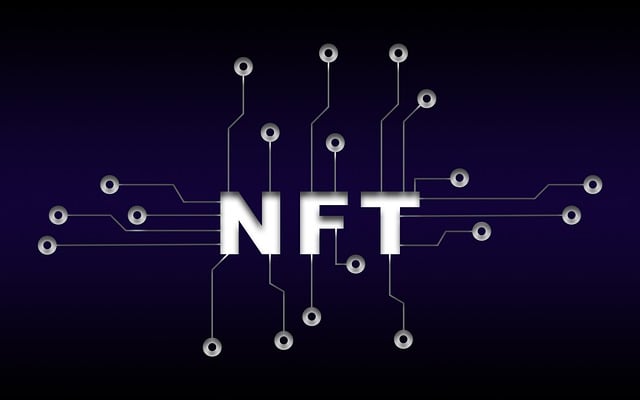What Is Market Making in Crypto: 2025 Guide to Liquidity Strategies
Author: Jameson Richman Expert
Published On: 2025-11-15
Prepared by Jameson Richman and our team of experts with over a decade of experience in cryptocurrency and digital asset analysis. Learn more about us.
What is market making in crypto? In short, market making in crypto is the activity of continuously posting buy (bid) and sell (ask) orders on an exchange to provide liquidity, capture the bid-ask spread, and enable smoother trading for other market participants. This comprehensive 2025 guide explains how crypto market making works, why it matters, the strategies and tools professional makers use, the risks and regulations to consider, and step-by-step advice for traders or firms who want to start market making on centralized and decentralized venues.

Why market making matters in crypto
Market makers are essential to healthy cryptocurrency markets. They reduce slippage for traders, narrow spreads, increase order book depth, and make it possible for exchanges to offer continuous trading with minimal price impact. Without market makers, many tokens — especially low-cap or newly listed coins — would suffer from high volatility, wide spreads, and poor execution quality.
In crypto, market making takes multiple forms: professional firms and high-frequency traders (HFTs) operating on centralized exchanges (CEXs), retail and institutional liquidity providers engaging with automated market makers (AMMs) on decentralized exchanges (DEXs), and hybrid approaches that combine both. Understanding these differences is crucial whether you are a trader, token issuer, or exchange operator.
Core concepts: bids, asks, spreads, and liquidity
- Bid and ask: The highest price a buyer is willing to pay (bid) and the lowest price a seller is willing to accept (ask).
- Bid-ask spread: The gap between the best ask and best bid. Market makers earn the spread (net of fees and adverse selection).
- Order book depth: The size of orders at consecutive price levels. Deeper books mean less price impact for large trades.
- Liquidity: The ability to buy or sell an asset quickly with minimal price change. Market makers improve liquidity.
How market making in crypto works
At a basic level, a market maker places both buy and sell limit orders around a reference price (the mid-price or a moving average). When other market participants take these orders, the market maker earns the spread. However, modern market making involves:
- Dynamic pricing algorithms that adjust quotes to reflect market movements and inventory.
- Risk-management routines (inventory limits, hedging triggers) to avoid directional exposure.
- Latency-optimized infrastructure for fast order updates and cancellations.
- Fee and rebate optimization on venues that offer maker rebates.
Example: simple spread capture
Suppose BTC spot price is $60,000. A market maker posts a buy order at $59,990 (bid) and a sell order at $60,010 (ask). If both orders fill, the gross spread captured is $20. After fees, slippage, and adverse selection costs, the net profit might be smaller. The strategy scales by posting many small orders across multiple pairs and exchanges.

Types of market making: CEXs vs DEXs
Market making differs significantly between centralized and decentralized venues:
Centralized exchange (CEX) market making
- Order-book based: market makers place limit orders in the order book.
- Often incentivized with maker rebates on large exchanges (fee tiers matter).
- Requires exchange accounts, KYC, capital, and API-based trading bots.
- Low-latency infrastructure is valuable but not always required for retail market making.
Decentralized exchange (DEX) market making — AMMs
On most DEXs (e.g., Uniswap, SushiSwap, Curve), liquidity is provided to pools rather than as discrete orders. Automated market makers (AMMs) use mathematical formulas (like x*y=k) to determine prices. Liquidity providers (LPs) deposit token pairs into a pool and earn fees proportional to their share but face impermanent loss — the risk that price divergence causes losses relative to holding tokens.
See the Automated market maker (AMM) explanation on Wikipedia for fundamentals and formulas.
Key market making strategies in crypto
Market making strategy design balances profitability, risk, and capital efficiency. Below are common approaches:
1. Passive quoting (spread capture)
Place balanced bid and ask orders around the mid-price to earn the spread. This is the simplest approach but requires careful fee and rebate management.
2. Inventory-based quoting
Adjust quotes based on current holdings. If inventory is skewed long, widen the bid and tighten the ask (or vice versa) to rebalance toward neutral position.
3. Directional hedging
When executions create exposure, hedge using futures/perpetual contracts on derivatives exchanges to neutralize directional risk. This is common among institutional market makers.
4. Statistical/microstructure strategies
Use order-flow prediction, mean-reversion signals, and statistical arbitrage across venues to exploit short-term inefficiencies.
5. AMM liquidity provisioning
Design concentrated liquidity ranges (like Uniswap v3) to maximize fee generation while minimizing impermanent loss. Strategies may rebalance or use limit-order-style liquidity to mimic traditional market making.
Economics: how market makers make money
Revenue sources and costs include:
- Revenue: bid-ask spread income, maker rebates, fees from liquidity pools, and arbitrage profits.
- Costs: exchange fees (taker and maker), slippage, adverse selection (trading against better-informed counterparties), funding/hedging costs, and operational costs (infrastructure, connectivity).
Profitability depends on high trade volume, efficient capital use, low latency for arbitrage opportunities, and robust inventory controls. On AMMs, revenue depends heavily on trading volume in the pool and LP fee tiers.

Tools and technology for crypto market making
Efficient market making requires a stack that supports fast quoting, monitoring, and risk controls:
- Exchanges with APIs: Binance, Bybit, Bitget, MEXC and many others provide REST and WebSocket APIs. Consider fee tiers and maker rebates when choosing venues. (Register examples: Binance registration link, MEXC registration, Bitget referral, Bybit invite.)
- Market making software: Open-source and commercial bots that implement quoting logic, e.g., Hummingbot (open-source), proprietary quant platforms, or custom in-house code.
- Risk dashboards: Real-time P&L, inventory exposure, funding rate trackers for perpetuals.
- Latency optimization: Co-location, optimized networking, and fast cancellation/execution handling for HFT strategies.
- Data feeds: Real-time order book snapshots, trade feeds, and historical tick data for backtesting.
Risk management: the make-or-break of market making
Risks include:
- Adverse selection: Being picked off by traders who have better information or faster execution.
- Inventory risk: Price moves against a market maker's accumulated position.
- Counterparty/exchange risk: Exchange outages, withdrawals freezes, or security breaches.
- Impermanent loss (on AMMs): Loss from price divergence relative to holding tokens.
Effective protections include dynamic inventory limits, delta-hedging with derivatives, automated stop-loss/hedging triggers, rate-of-trade limits, and diversified presence across multiple venues to avoid single-point failures. Regular stress testing and post-trade analytics are essential.
Regulation and compliance
Regulatory landscapes are evolving rapidly. Some jurisdictions view market making as a normal trading business, while others consider it under market manipulation or marketing obligations, particularly if the maker is the token issuer. Firms should consider:
- Licensing and registration requirements (depends on jurisdiction).
- Rules against manipulative practices (e.g., spoofing, layering) enforced by agencies like the U.S. SEC and CFTC.
- AML/KYC obligations on CEXs for accounts.
Consult legal counsel and consider compliance tooling to log activity, retain records, and respond to audits. See the U.S. Securities and Exchange Commission (SEC) for regulatory guidance and enforcement cases related to market conduct.

Algorithmic and quantitative considerations
Designing algorithms for market making requires balancing several objectives: maximize spread capture, minimize inventory risk, satisfy exchange constraints, and remain competitive. Quantitative components include:
- Spread model: Dynamic spreads adjusted by volatility, trade volume, and competition.
- Price reference: Short-term mid-price, TWAP, or cross-exchange composite.
- Inventory control: Target inventories, skew parameters, and rebalancing thresholds.
- Latency and cancellation policy: Manage order churn and minimize rejection rates.
- Backtesting: Tick-level simulation using historical order book data.
Build conservative models at first, measure latency and fill rates, then iterate. Many successful shops invest heavily in monitoring and A/B testing quoting parameters.
Practical guide: how to start market making in crypto (step-by-step)
- Choose your venue(s): Decide between CEXs and DEXs based on capital, strategy, and jurisdictional constraints. Compare fee schedules, liquidity, and API capabilities. You can create accounts via Binance, MEXC, Bitget, or Bybit links provided above.
- Define capital and risk limits: Set maximum inventory exposure per pair, per exchange, and overall margin limits.
- Select or build a bot: Use open-source tools like Hummingbot to prototype, or develop a custom bot for performance and bespoke strategies.
- Configure quoting rules: Establish spreads, order sizes, depth, and re-quote intervals. Start conservative.
- Set hedging rules: Determine when to hedge with futures or other instruments to neutralize directional exposure.
- Backtest: Run simulations using historical order books and trade data to evaluate P&L, fill rates, and inventory dynamics.
- Start small in production: Use low capital allocation and scale gradually as you validate strategy and infrastructure.
- Monitor and iterate: Track performance metrics, latency, fill rates, and adjust parameters.
AMMs vs order-book makers: tradeoffs
| Order-book Market Making (CEX) | AMM Liquidity Provision (DEX) |
| Earn spread per executed limit order | Earn a share of swap fees proportional to pool share |
| Active quoting, inventory management required | Passive capital provisioning, subject to impermanent loss |
| Can hedge using derivatives quickly | Hedging may require external trades and incur costs |
| Relies on exchange infrastructure and order book depth | Pricing determined by AMM formula and liquidity concentration |
Both models can be profitable; choice depends on expertise, tech, and risk tolerance. Concentrated liquidity in Uniswap v3 blurs the line, enabling more order-like placements on DEXs.

Common pitfalls and how to avoid them
- Overly tight spreads: Competing for priority by posting razor-thin spreads can increase adverse selection; instead, optimize for net P&L including fees.
- Poor inventory limits: Not constraining exposure leads to large directional losses. Implement hard and soft caps.
- Ignoring fees and rebates: Different exchanges have different fee structures—calculate net edge precisely.
- Lack of monitoring: Exchange outages or rate-limit errors can leave positions stranded. Use alerts and multi-exchange redundancy.
- Underestimating AMM impermanent loss: Model expected loss scenarios for concentrated liquidity ranges and volatile assets.
Metrics and KPIs for market making
Track these to evaluate and optimize performance:
- Net P&L and ROI (daily, weekly, monthly)
- Fill rate (percentage of quotes executed)
- Average spread captured (net of fees)
- Inventory balance and turnover
- Latency metrics (quote-to-fill time, cancellation time)
- Sharpe ratio and max drawdown for strategy stability
Case study: market making a newly listed token
When a token lists, initial liquidity is sparse and spreads wide. A market maker might:
- Start with conservative quotes with relatively wide spreads to avoid being picked off.
- Gradually tighten spreads as volume and order flow stabilize.
- Provide incentives (if permitted) such as rebates or joint liquidity programs with the token issuer.
- Monitor social and on-chain signals — token announcements or whale movements can create sudden volatility.
For token issuers, partnering with reputable market makers can deliver better listing quality; always formalize agreements and disclose them if required by regulations.

Advanced techniques: cross-exchange and cross-market strategies
Advanced market makers often run multi-venue strategies:
- Cross-exchange arbitrage: Exploit price differences across exchanges, hedging exposures to stay market-neutral.
- Perpetual funding arbitrage: Use futures funding rate differences to capture carry or hedge spot exposure.
- Options and delta-hedging: Use options to manage tail risk and skew exposures.
Education and continuous learning
Market microstructure evolves quickly in crypto. Useful reading and resources include Investopedia’s overview of market makers, academic papers on market microstructure, and exchange-specific docs. Wikipedia provides clear definitions for foundational concepts: Market maker (Wikipedia).
Further reading and resources
To deepen your practical knowledge, read this beginner-friendly trading guide that explains crypto trading mechanics: How Does Cryptocurrency Trading Work — Complete Beginner’s Guide.
For strategy insights and long-term context, explore price prediction and scenario analysis: Ethereum Price Prediction 2030 — Tom Lee Scenarios, Analysis and Strategy.
If you use signal services or community channels to monitor market sentiment, these curated lists can help: Best Telegram Channels for Crypto Signals 2025 — Top Picks Guide.
For broad price outlooks and prediction methodologies, review this essential guide: Price Prediction Cryptocurrency — Essential Guide.
For operational tasks such as account and transaction management, guides like how to download transaction history can be helpful for record-keeping and compliance: How to Download Transaction History from Cash App — Complete Step-by-Step Guide.

Practical checklist before you start market making
- Confirm legal and tax status for your jurisdiction
- Choose exchanges and complete KYC
- Secure infrastructure and API keys (use IP whitelisting)
- Define strategy parameters and risk limits
- Backtest with historical data
- Start in small live allocation and scale with performance
- Document operations, logs, and incident response procedures
Where to practice and test strategies
If you want to gain hands-on experience, create accounts on major exchanges that offer testnets or low-cost trading, or run bots against historical replay environments. For production trading, consider reputable exchanges; here are some registration links to get started quickly:
Realistic expectations for returns
Market making is not a guaranteed income stream. Profitable operations require:
- High trading volume in targeted pairs
- Low transaction fees or attractive maker rebates
- Robust risk management limiting tail losses
- Competitive edge in quoting, hedging, or pricing models
Return rates vary widely — professional firms report modest but consistent returns, often scaled by leverage and trading frequency. Retail participants can profit but should expect higher variance and larger proportionate operational risk.

Ethics and good practices
Operate transparently and avoid manipulative behaviors like spoofing, wash trading, or cross-venue market manipulation. Maintain clear records and comply with market and token listing agreements. Ethical market making supports long-term market health and helps build trust with exchanges and token communities.
Conclusion — Is market making right for you?
Market making in crypto is a sophisticated, capital- and technology-intensive activity that can be profitable when executed well. It improves market quality and enables better trading experiences for all participants. Whether you're a retail trader experimenting with a bot, a liquidity provider in DEX pools, or an institutional firm building a multi-venue market-making desk, prioritize risk controls, regulatory compliance, and continuous testing.
Start small, learn the microstructure, and scale as you validate the strategy. For more beginner-friendly trading context and strategy resources, check the linked guides above and continue educating yourself on order book dynamics, AMM mechanics, and exchange fee structures.
Ready to experiment? Open exchange accounts with reputable platforms (links above), run simulations, and consider open-source tools like Hummingbot to prototype strategies. Always perform due diligence and consult legal/tax professionals tailored to your jurisdiction.
Helpful references: